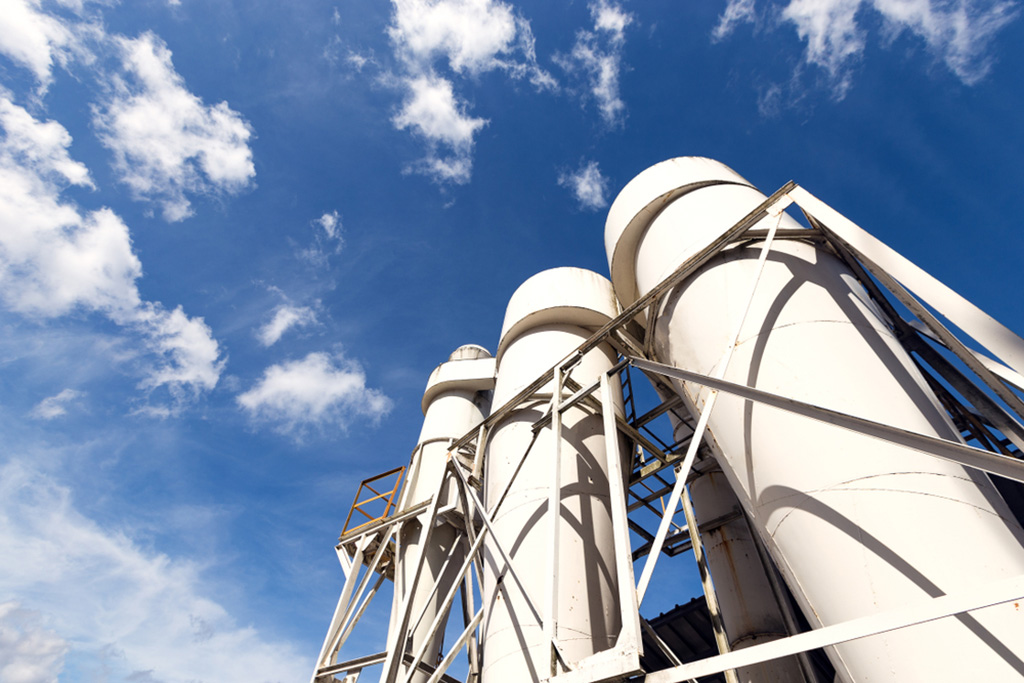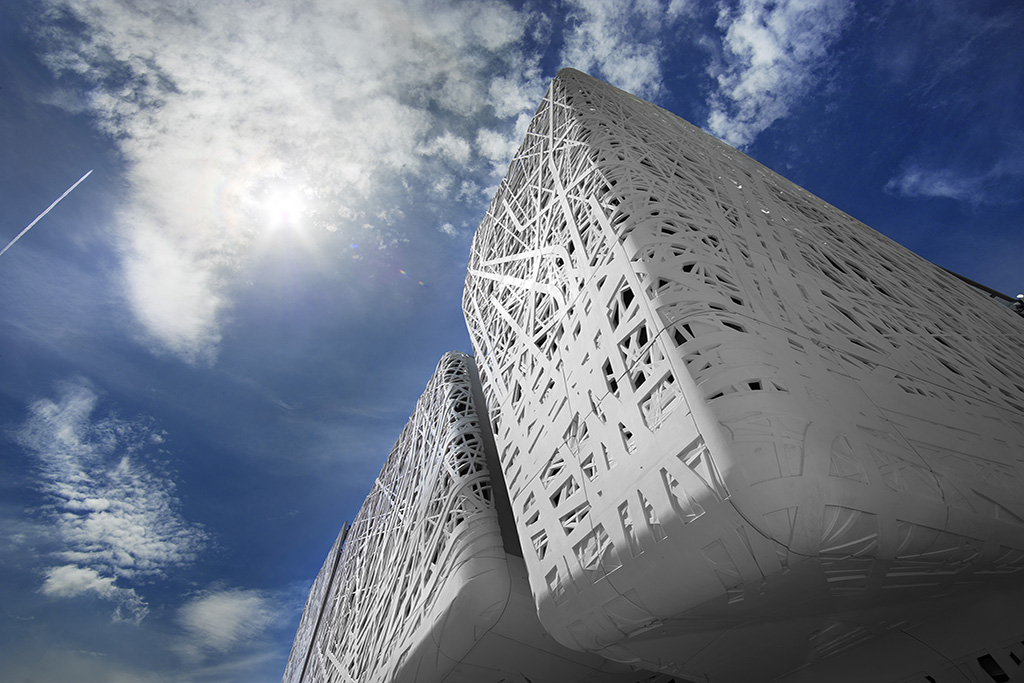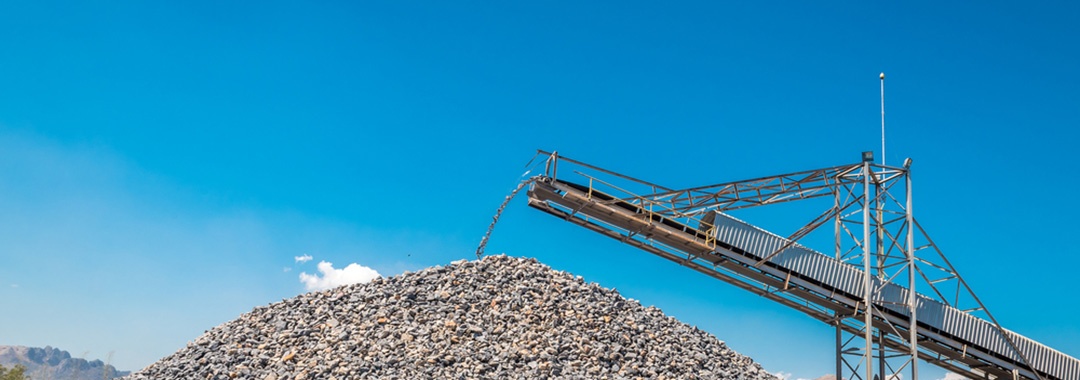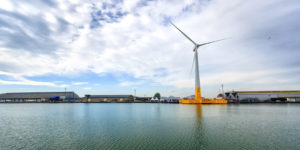As part of a drive for greater sustainability, the cement industry is pursuing innovative methods of reducing its carbon dioxide emissions.
Concrete is an amazing and practically irreplaceable substance. After water, this strong and versatile material is the second most consumed substance on the planet. It has made a vital contribution to the development of society as we know it, and to continue to do so well into the future, the sustainability – and the sustainability of the cement that is a key ingredient in the process of making concrete – is incredibly important.
One of the key sustainability challenges currently facing the cement industry is the reduction of carbon dioxide (CO2) emissions. CO2 is a by-product of cement, and therefore, concrete production; it is released when fossil fuels are burnt to heat up the raw material and when the limestone is calcined in the production process.
Now, in a bid to address environmental challenges, pioneering companies are actively working to decarbonise the vital process of cement and concrete production.
Now pioneering companies are actively working to decarbonise the vital process of cement and concrete production. In a bid to address environmental concerns and align with European decarbonisation ambitions, these companies are actively working to decarbonise their production processes.
Efforts to support a low carbon agenda are industry wide. In Austria, LafargeHolcim are lowering emissions in their cement plants through the use of alternative fuels and innovative waste management systems. The use of slag and fly ash as an inter-ground addition in the production of cement is key; products are also optimised with ground limestone, explains Johannes Daul of LafargeHolcim Austria.
The company have lowered CO2 emissions to 525 kg per tonne of cement - the lowest emission per tonne rate in Europe, “We achieve a low CO2 emission per tonne of clinker due to biomass and high alternative fuel rates — more than 90% — together with high efficiency of plant operational management,” says Daul.

Europe's cement industry is continually reducing its carbon footprint (Photo via Shutterstock)
Since the 1990s, a landfill ban has been in place in Austria and the introduction of waste management systems has resulted in a reduction of emissions across the country. As Daul notes, “It helps that there is a very high awareness culture on separating waste throughout Austria both in private households and in industries.”
The early introduction of the ban prompted Austrian authorities and industries to work closely together to develop ways of utilising waste rather than dumping it in landfills, “With joint ventures in the waste industry we can provide the plants with alternative fuels and raw materials of high quality with low amounts of impurities, and constant heat value and moisture levels,” says Daul.
Per Brevik, Director of Alternative Fuels and Sustainability at HeidelbergCement (Northern Europe), explains that they aim to make their concrete products carbon neutral by 2030, with the company carrying out a range of initiatives to achieve this.
“The Direct Separation Reactor (DSR) uses heat indirectly to break the link between CaO and CO2” – Jan Theulen
One of their biggest efforts is taking place at the Norcem Brevik cement production plant in Norway, which has been running a carbon capture project since 2013. The results have been positive, Brevik explains, “The main conclusions are that there are technologies available to up-scale. Norcem Brevik gas tested Aker Solutions’ amine technology on the real flue gas, and we have decided to continue the co-operation with them.”
Amine technology removes carbon dioxide from flue gas emissions through absorption and chemical reaction, and the pilot project at Norcem Brevik has shown stable operation with low energy consumption. Lowered rates of degradation and emissions output were also observed, suggesting this form of post-combustion capture technology could be effective within the cement industry.
Brevik adds that the full-stage project is dependent on securing public funding, however, he is optimistic about the future. The Norwegian government has supported the project to date and are currently discussing next steps, “The proposal is that the Brevik project will continue into the FEED phase. Based on this, we plan to start the next phase beginning of September. The FEED project report will be submitted beginning of July 2019.”
This, says Brevik, is a “once-in-a-lifetime” opportunity for the industry.

The Palazzo Italia in Milan is an example of a concrete building that absorbs carbon dioxide (Photo via HeidelbergCement Group)
While the LafargeHolcim and Brevik examples lean on existing technology, there are new and innovative approaches under development that can significantly boost the efficiency of carbon capture.
One of the most ambitious projects brings together 11 organisations — HeidelbergCement Group, CEMEX, Tarmac, Lhoist, Calix Limited, ECN, Imperial College London, PSE, Quantis and The Carbon Trust — who are working together on a European Union Horizon 2020 research and innovation project called LEILAC (Low Emissions Intensity Lime And Cement).
“The LEILAC project will pilot a new technology that could enable Europe’s cement and lime industries to capture their unavoidable process CO2 emissions for a minimal environmental or economic burden,” explains Jan Theulen, Group Director of Alternative Resources at HeidelbergCement.
“The project’s first objective is to demonstrate that Direct Separation (DS) technology can be applied to the cement and lime industries, and that it can capture over 95% of the CO2 process emissions— or around 60% of a plant’s total CO2 emissions— without significant energy penalty or capital cost,” says Theulen.
“Concrete has a significant value in making buildings energy efficient; it is important as a building material for a sustainable future and our challenge is to produce with as small footprint as possible” – Per Brevik
Unlike first- and second-generation carbon capture technologies, DS does not use end-of-pipe methods, rather, it is integrated into the process itself. During cement production, around 65% of the CO2 arises when the limestone (CaCO3) is calcined to free lime (CaO), explains Theulen.
In the DS process, the limestone is placed in a heated steel tube in a Direct Separation Reactor (DSR). This keeps it apart from flue-gases, meaning it does not mix with the CO2 being released by the kiln. The heat in the tube then breaks the link between the CaO and CO2 in the limestone; allowing the CO2, which is 98% pure, to be separated rather than captured.
Another project funded under the EU’s Horizon 2020 programme is CEMCAP, which aims to prepare the groundwork for the European cement industry to implement CO2 capture on a large scale. Usually appropriate industrial settings, CEMCAP demonstrates carbon capture technologies to the industry, paving the way for their adoption.
The European Cement Research Academy (ECRA) has also been researching carbon capture technologies for almost seven years now. Among the most promising is oxyfuel technology, which is expected to be the most energy-efficient, and therefore least costly, method of carbon capture.
LafargeHolcim have lowered CO2 emissions to 525 kg per tonne of cement - the lowest emission per tonne rate in Europe
ECRA’s research will be put to the test by HeidelbergCement and LafargeHolcim, who have agreed to install test oxyfuel technology kilns in their plants, explains Dr. Martin Schneider, Managing Director ECRA.
Investment and wide-ranging support are key to the success of the project, says Schneider. While oxyfuel kilns are similar to existing kilns, they require substantial— and therefore costly— retrofits. Further, once the CO2 has been captured, it still needs to be stored.
Oxyfuel technology still has to prove its technical feasibility in a demonstration plant, however, Schneider is upbeat about the future, “It seems that in a time to come the cement industry will be able to provide a solution to capture CO2 from its exhaust gases and significantly lower its CO2 emissions,” he says.
This combination of new and existing technology, with projects operating at both national and European level, ensures that ongoing improvements to the sustainability of the cement sector will continue to be achieved.




